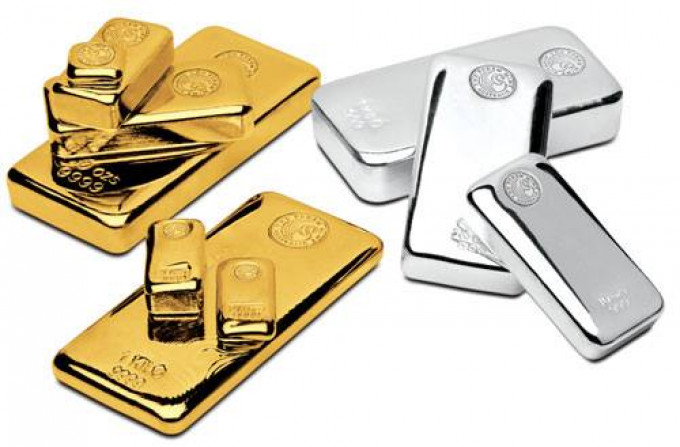US inflation likely reached a new 40-year high in June, driven up by a spike in gas costs, more expensive food and rent, and pricier cars and hotel rooms.
A government report Wednesday is expected to show that consumer prices soared 8.8% in June compared with a year earlier, according to data provide FactSet. That would be an increase from 8.6% in May and the biggest yearly rise since December 1981.
Inflation at that level would make it highly likely the Federal Reserve will implement another large interest rate increase at its next meeting in two weeks. Higher rates are intended to cool consumer and business spending and slow the economy and inflation.
Such large price increases would also highlight the brutal impact that inflation has had on many families’ finances, as the costs of many necessities has soared at a faster pace than incomes. Lower-income Americans and Black and Hispanic families have fared worse, as a greater percentage of their budgets are spent on items like gas and food.
So far in July, however, gas prices have fallen from the eye-watering $5 a gallon reached in mid-June to an average of $4.66 nationwide as of Tuesday. That is still far higher than a year ago, but the drop points to the potential for sharply lower inflation this month and possibly in August.
Still, rising prices have caused a steep decline in consumers’ confidence in the economy, dragged down President Joe Biden’s approval ratings and present major political risks for congressional Democrats this fall. Forty percent of U.S. adults said tackling inflation should be a top government priority this year in a June AP-NORC poll, up from just 14% in December.
Americans sharply ramped up their spending as the pandemic waned a year ago, initially splurging on furniture, exercise equipment, and other home goods and in recent months switching more to travel, dining out, and going to movies and concerts. Surging demand, partly fueled by government stimulus checks, overwhelmed supply chains and sent prices soaring.
On a monthly basis, economists forecast that Wednesday’s report will show prices rose 1.1% in June from May, according to FactSet. Some economists estimate that as much as half of that gain would reflect higher prices at the pump.
Excluding the volatile food and energy categories, prices likely rose 0.6% in June for the third straight month and 5.7% from a year earlier.
Monthly increases of that size would likely cement the case at the Federal Reserve for another large, 0.75 percentage point increase in its benchmark short-term interest rate, which is currently in a range of 1.5% to 1.75%. At its rate-setting meeting last month, Fed officials implemented a 0.75 percentage point hike, the largest in nearly three decades.
The persistence of inflation has unnerved Fed Chair Jerome Powell and other Fed officials, who are engaged in the fastest series of rate hikes since the late 1980s in an effort to bring it to heel.
Powell has emphasized that the central bank wants to see “compelling evidence” that inflation is slowing before dialing back its rate hikes. Such evidence would need to be a “series of declining monthly inflation readings,” he said at a press conference last month.
Some economists worry that the Fed’s desire to quell inflation could cause it to hike rates too quickly, even as the economy, by some measures, is slowing. Much higher borrowing costs could tip into recession next year.
Consumers have started to pull back a bit on spending, home sales are falling as mortgage rates rise, and factory output slipped in May.
The Fed would like to see weaker growth, which should help bring down inflation. Healthy job gains in June point to an economy that is still expanding, with little sign of an imminent recession.
Inflation is likely to slow later this year, but it’s not clear by how much. Oil prices fell Tuesday to about $96 a barrel and other commodities, including metals such as copper, have also gotten cheaper, mostly because of recession fears in the US and Europe.
Shipping costs for international freight have fallen and there are fewer ships stuck at the Port of Los Angeles and Long Beach, America’s largest. Wholesale gas prices have fallen to about $3.40 a gallon, which suggests retail prices could drop to as low as $4.20 by August, according to Omair Sharif, founder of Inflation Insights. Wholesale used car prices are also falling, which point to declining used car prices in the coming months.
Yet plenty of items are still rising in price. Apartment rents have jumped as more solid job gains and wage increases have encouraged more Americans to move out on their own. Average rents for new leases have increased 14% in the past year, according to real estate brokerage Redfin, to an average of $2,016 a month.
Rents as measured by the government’s inflation index have increased more slowly because they include all rents, including existing leases. But economists expect the rising expense of new leases will push the government’s inflation measure higher in the coming months.
Inflation has spiked overseas as well. It reached 9.1% in the United Kingdom in May, the highest level in four decades, driven mostly by higher gas and food costs. In the 19 European countries that use the euro currency, it hit 8.1% that month, from a year earlier, the most on records dating back to 1997.



1672397318_680.jpg)



